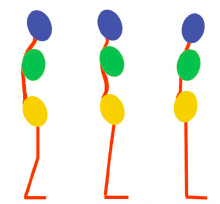Balanced in Body and Centered in Spirit
To build physical resilience we focus on body alignment and breath.
Just deepening the breath increases the oxygen that is available to the brain and consequently alertness. As simple as this may sound, many adults living in western cultures today, have lost the ability to move with integrated efficiency.
Like the “obesity epidemic” caused by poor dietary habits, Australians are also suffering from chronic injuries and pain due to poor movement habits. Estimates from the National Health Survey (Australian Bureau of Statistics 2007/08) suggest that about 1.8 million Australians or 9.2% of the population suffer from back problems alone.
“Stand like a tree, sit like a rock.
Billow like the Great Waves.”
We can teach the Warrior Way of sitting, standing and breathing to help you develop greater awareness, presence and decision making. Our emphasis is on:
Alignment Establishing the body’s natural alignment through the skeletal system to achieve physical and psychological centeredness.
Breathe Developing diaphragmatic breathing to foster integration of our sympathetic and parasympathetic nervous systems.
Connection Movement based on natural balance. Sit by settling the body without slumping or excessive rigidity. Stand by allowing our bodies to elevate. Walk by translating energy into coordinated and balanced forward momentum over the feet.
“The root is in the feet,
It issues up through the legs,
is directed by the waist,
and expressed through the fingers.”
Developing Coordinated Movement
We practice raising the arms by holding a small stick like a samurai sword. When we appreciate that our spine is not just to hold us up but also to connect the pelvis to the shoulders we can stimulate the transmission of energetic flow through the body from feet to fingers.
Benefits
- The use of a small massage stick provides a focal point that helps to coordinate the left and right brain with the breath.
- Learn to raise and lower the arm without disturbing our centre, losing balance or increasing tension in the shoulders or back.
- Ability to release and lower the shoulders and let the arms float up whilst putting energy into the little finger.
- The swinging movement of the arms helps to relieve shoulder tightness usually related to poor posture, inefficient movement and tension holding patterns.
- Raising and lowering the arms in a coordinated fashion also helps to centre the body:
– It corrects a slouched or an arched posture that impedes shoulder function and breathing patterns and puts strain on the spine and,
– strengthens a collapsed upper spine where the forward projection of the head and neck reduces shoulder flexibility.



